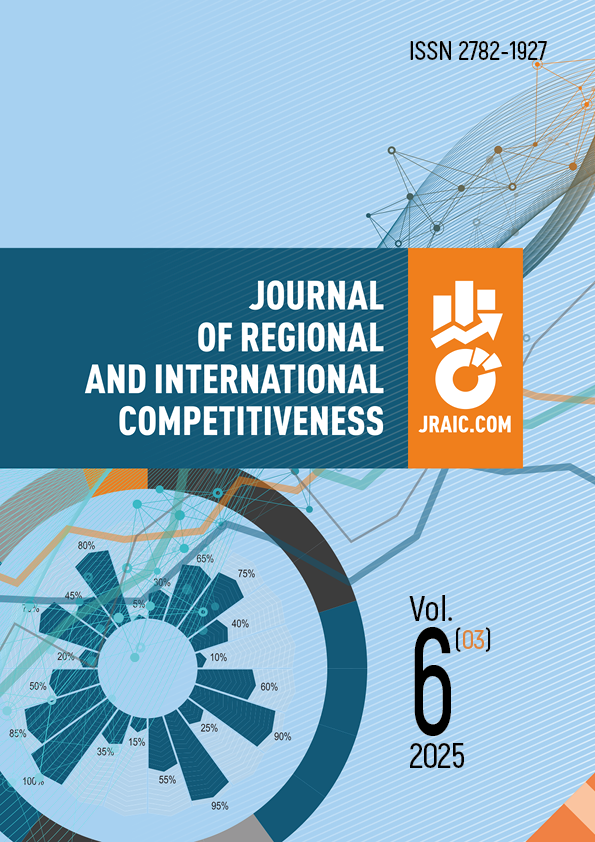Kuban State Agrarian University named after I.T. Trubilin
Krasnodar, Krasnodar, Russian Federation
The article examines the challenges of managing a modern company in increasing dynamics of digital transformation. Moreover, the integration of artificial intelligence (AI) is a key element ensuring company management flexibility, adaptability, and proactivity. The development of a holistic hierarchical economic-mathematical model synthesises strategic planning, operational management, and predictive analytics. The model is based on machine and deep learning algorithms, and considers dynamic interrelationships between internal and external factors influencing the company's activities. The research considers practical aspects of AI implementation in critical business processes, analyses its on companies key performance indicators, 2020-2024. It also studies industry specifics, macro- and microeconomic trends, and socio-cultural aspects. The implementation of AI intensifies decision-making, minimises cognitive biases, optimises time costs, affects the operational processes, increases both the level of customer interaction personalisation and the company's competitiveness. Moreover, the article concerns with AI ethical aspects, development of control and regulatory mechanisms to provide transparency, fairness, and responsible decision-making.
digital transformation; artificial intelligence; economic and mathematical modeling; holistic approach; prognostic approach
1. Schwab, K. (2016). The Fourth Industrial Revolution. World Economic Forum. New York: Buseness.
2. Porter, M. E., & Heppelmann, J. E. (2014). How Smart, Connected Products Are Transforming Competition. MIT Sloan Management Review, 53(4), 64–88.
3. Brynjolfsson, E., & McAfee, A. (2017). The second machine age: Work, progress, and prosperity in a time of brilliant technologies. New York: WW Norton & Company.
4. Niven, P. R. (2006). Balanced Scorecard Step-by-Step: Maximizing Performance and Main-taining Results. John Wiley & Cons, Inc.
5. Manyika, J., Chui, M., Miremadi, M., Bughin, J., George, K., Kaplan, R., & Van Kuiken, S. (2017). A future that works: Automation, employment, and productivity. McKinsey: Global Institute.
6. Purdy, M., & Daugherty, P. (2016). Why artificial intelligence is the future of growth. Accenture. Retrieved from https://www.brianvmullaney.com/wp-content/uploads/2017/09/Accenture-Why-AI-is-the-Future-of-Growth.pdf
7. Bostrom, N. (2014). Superintelligence: Paths, dangers, strategies. Oxford: University Press.
8. O'Neil, C. (2016). Weapons of math destruction: How big data increases inequality and threatens democracy. Crown Publishing Group.
9. Raisch, S., & Krakowski, S. (2021). Artificial intelligence and management research: Opportunities and challenges. Academy of Management Perspectives, 35(4), 436–448.
10. Kohli, R., & Melville, N. P. (2019). Digital Strategy: New Directions for Information Systems Research. MIS Quarterly, 43(3), 677–688.
11. Chen, H., Chiang, R. H., & Storey, V. C. (2012). Business Intelligence and Analytics: From Big Data to Big Impact. MIS Quarterly, 36(4), 1165–1188. DOI: https://doi.org/10.2307/41703503
12. Duan, Y., Edwards, J. S., & Dwivedi, Y. K. (2019). Artificial intelligence for decision making in the era of Big Data: evolution, challenges and research agenda. International Journal of Information Management, 48, 63–71. DOI: https://doi.org/10.1016/j.ijinfomgt.2019.01.021
13. Huang, M. H., & Rust, R. T. (2018). Artificial intelligence in service. Journal of Service Research, 21(2), 155–172. DOI: https://doi.org/10.1177/1094670517752459
14. Van Dijck, J., Poell, T., & de Waal, M. (2018). The platform society: Public values in a connective world. Oxford: University Press. DOI: https://doi.org/10.1093/oso/9780190889760.001.0001
15. Floridi, L. (2019). The Ethics of AI: From Principles to Practice. Science and Engineering Ethics, 26(5), 2569–2588.
16. Davenport, N. Thomas. (2018). The AI Advantage: How to Put the Artificial Intelligence Revolution to Work. London, England: MIT Press. DOI: https://doi.org/10.7551/mitpress/11781.001.0001
17. Autor, D. H. (2015). Why Are There Still So Many Jobs? The History and Future of Workplace Automation. Journal of Economic Perspectives, 29(3), 3–30. DOI: https://doi.org/10.1257/jep.29.3.3
18. Kane, G. C. et al. (2019). The Technology Fallacy: How People Are the Real Key to Digital Transformation. London, England: MIT Press. DOI: https://doi.org/10.7551/mitpress/11661.001.0001
19. Bughin, J., & Hazan, E. (2017). The Age of Analytics: Competing in a Data-Driven World. McKinsey & Company.
20. Zuboff, S. (2019). The Age of Surveillance Capitalism. Public: Affairs.
21. Tapscott, D., & Tapscott, A. (2016). Blockchain Revolution. New York: Penguin.
22. Ross, J. W., Beath, C. M., & Mocker, M. (2019). Designed for Digital: How to Architect Your Business for Sustained Success. London, England: MIT Press. DOI: https://doi.org/10.7551/mitpress/12188.001.0001
23. Nambisan, S., Lyytinen, K., Majchrzak, A., & Song, M. (2017). Digital Innovation Management. MIS Quarterly, 41(1), 223–238. DOI: https://doi.org/10.25300/MISQ/2017/41:1.03
24. George, G., Osinga, E. C., Lavie, D., & Scott, B. A. (2016). Big Data and Data Science Methods for Management Research. Academy of Management Journal, 59(5), 1493–1507. DOI: https://doi.org/10.5465/amj.2016.4005
25. Yoo, Y., Henfridsson, O., & Lyytinen, K. (2010). The New Organizing Logic of Digital Innovation. Research Policy, 39(8), 1094–1105.
26. Lusch, R. F., & Nambisan, S. (2015). Service Innovation: A Service-Dominant Logic Perspective. MIS Quarterly, 39(1), 155–175. DOI: https://doi.org/10.25300/MISQ/2015/39.1.07
27. Rust, R. T., & Huang, M. H. (2014). The Service Revolution and the Transformation of Marketing Science. Journal of Service Research, 17(2), 204–216.
28. Gartner, W. B., & Riessman, F. (1974). The Service Sector of the U.S. Economy. Academy of Management Journal, 17(2), 267–278.
29. Parker, G. G., Van Alstyne, M. W., & Choudary, S. P. (2016). Platform Revolution. W.W. Norton & Company.
30. Schwab, K., & Davis, N. (2018). Shaping the Future of the Fourth Industrial Revolution. New York: Currency.




















